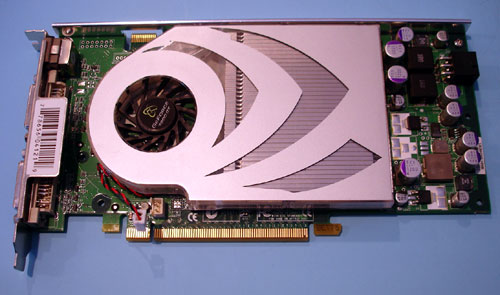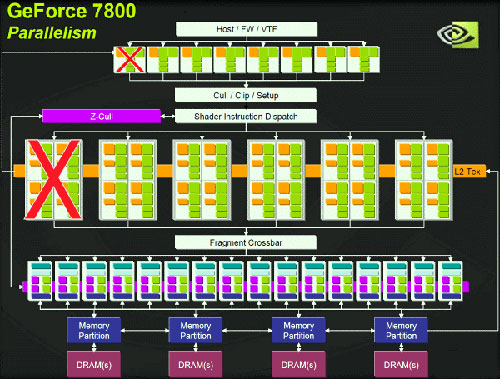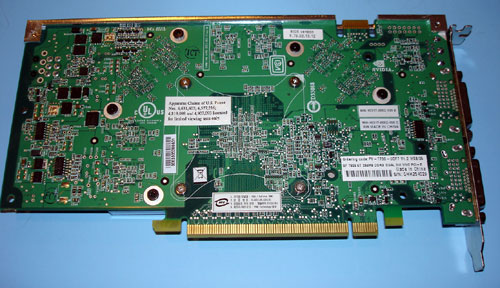XFX GeForce 7800 GT Video Card Review
The Card

The first thing I noticed about the 7800GT was its size. The card is both very large and very heavy. The design and look is the same as NVIDIA’s reference 7800GT with a large aluminum heat spreader that covers the entire core side of the card. The 7800 GT we’ll cover today is based on PCI-Express technology (NVIDIA ha already stated the 7800 Series will not be released as an AGP card), and like its big brother the GTX, requires a 6 pin PCI-E power connector. Something unique to XFX video card is their video connections, featuring a pair of DVI connectors as well as an S-Video connector (no VGA here, but they do include a DVI to VGA adapter).

The 7800GT, like the 7800GTX, is based on NVIDIA’s N70 architecture built upon a .11 NM process. The major difference between the 7800GT and the 7800GTX is the pixel shaders (or pipelines). Pixel pipelines are a series of instructions executed by the GPU which sends information to the pixels within your monitor telling it how to display different textures and transformations. The more pixel pipelines, the faster the GPU can process instructions.While the 7800GTX features 24 pipes, the GT has “only” 20. In the grand scheme of things, this difference will result in a slightly slower card, but it is still leaps and bounds ahead of its predecessor (the 6800GT). While there is always the chance that someone will find a work around to re-enable the extra pipelines, my bet is that NVIDIA learned their lesson from previous mods to their products.

While the NVIDIA reference 7800GT runs its core at 400MHz, XFX’s 7800GT core comes overclocked out of the box at 450MHz, which is 20MHz faster than a 7800GTX. So, while the disabled vertex and pixel shaders will affect performance, the overclocked XFX 7800GT core definitely tries to make up for its handicap with brute force.
The 7800GT, like the 7800GTX, features 256MB of GDDR3 memory as well as a 256-bit interface. What separates the two here is a reference 7800GT’s memory runs at 1000MHz while a reference 7800 GTX clocks in at 1200MHz. Again, XFX’s 7800 GT tries to close the gap, with the memory timed at 1050MHz out of the box!

I think two things are going to make this card very attractive to enthusiasts. First, although the 7800GT comes with 4 less pixel pipelines and one less vertex pipeline, I believe the fact that the XFX 7800GT comes overclocked out of the box will help make up some of that performance difference. Second, the 7800GT comes in at a little over $150 cheaper than its big brother the GTX. I also think that while a pair of 7800GTX’s in SLI may sound pretty sweet, most systems will have other bottlenecks that will limit the overall ability of that $1200 solution. So, in my opinion, much like the 6800GT, the 7800GT will be the sweet spot for the foreseeable future, both in performance and in price.


Comments are closed.